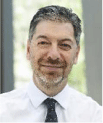Whale detection and microseismic monitoring via DAS using submarine telecommunications cables – a case study from the NWS, Western Australia
Henry A. Debens A * , Denise McCorry A , Evgenii Sidenko B , Christine Erbe B , Olivia Collet C , Roman Pevzner C and Boris Gurevich C
A * , Denise McCorry A , Evgenii Sidenko B , Christine Erbe B , Olivia Collet C , Roman Pevzner C and Boris Gurevich C
A
B
C

Henry Debens has been working as a Geophysicist at Woodside Energy since 2016, primarily in the Technology & Innovation group and lately as part of the Global Wells & Seismic group. He joined Woodside after completing an MSci in geophysics and a PhD in petroleum geophysics at Imperial College London. Henry’s work involves all aspects of the seismic data life cycle, with projects ranging from acquisition through to interpretation, but chiefly concerns the development and application of novel approaches to seismic imaging and inversion. |

Denise McCorry is a Principal Biodiversity Scientist in the Corporate Services Biodiversity & Science team at Woodside Energy, based in Western Australia. Denise obtained her PhD from the University of Hong Kong and has held post-doctoral fellowships from the Chinese University of Hong Kong, the Zoological Society of London, and the University of British Columbia. Denise has over 20 years of experience in tropical marine ecological studies and marine protected-area planning and management in South East Asia (Hong Kong, Brunei, the Philippines, and Indonesia) and environmental impact assessment for the extractive industries. Her current role at Woodside focusses on the science partnership programs and scientific studies to underpin credible environmental impact assessments across all offshore business-stream activities in Australia. |

Evgenii Sidenko is a Research Associate in the Centre for Marine Science and Technology at Curtin University. He received an MSc in geophysics (2012) from Lomonosov Moscow State University and a PhD (2023) from Curtin University. Evgenii worked as a data processing and seismic inversion geophysicist in various companies over 6 years. His research interests include DFOS, borehole seismic, and passive acoustic monitoring. |

Christine Erbe is a John Curtin Distinguished Professor in Earth and Planetary Sciences at Curtin University and the Director of the Centre for Marine Science and Technology at Curtin University, Perth, Western Australia. She holds a Master’s degree in Physics (University of Dortmund, Germany, 1993) and a PhD in Geophysics (University of British Columbia, Canada, 1998). She previously worked in industry (underwater acoustic consulting) and in government (noise effects on marine mammals and management thereof). Her research interests are underwater acoustics, marine bioacoustics, marine soundscapes, noise effects on animals, mitigation, and passive acoustic monitoring. She is a Fellow of the Acoustical Society of America. She is a Board member of the International Commission for Acoustics. |

Olivia Collet joined Curtin University as a Research Fellow in 2022. She received an MSc (2010) in geophysics from the University of Strasbourg, France, and a PhD (2015) in exploration geophysics from Curtin University, Perth, Australia. She worked as a research geoscientist for CGG GeoSoftware for 5 years, where she contributed to developing anisotropy, rock physics, and machine learning software packages. She then held a postdoctoral position at the University of Pau and the Pays de l’Adour, France. Her research interests include DFOS, machine learning, rock physics, anisotropy, and reservoir characterisation. |

Roman Pevzner received his BSc in geology (1999), MSc in geophysics (2001), and PhD in geophysics (2004), all from Lomonosov Moscow State University. From 2002 to 2008, he led the software development department at service company DECO Geophysical and undertook geophysical research and teaching at the same university. In 2008, Roman joined Curtin University in Perth, Western Australia, where he has worked as an Associate Professor and Professor (from 2018). His main areas of interest include subsurface monitoring using active and passive seismic methods, borehole seismic, DFOS for geophysical applications, and CO2 geosequestration. Over the last 14 years, Roman has been involved in multiple CCS projects in Australia and abroad and has led the development of the seismic monitoring program for two recent stages of the CO2CRC Otway project. Roman has co-authored four book chapters, 86 journal papers, and more than 180 refereed conference publications. |

Boris Gurevich has an MSc in geophysics (1976) from Moscow State University and a PhD (1988) from Institute of Geosystems, Moscow, Russia. After several research appointments in Germany, the UK, and Israel, in 2001 he joined Curtin University, where he currently serves as a John Curtin Distinguished Professor and Director of the Centre for Exploration Geophysics. Boris has over 100 journal publications in the areas of physics of rocks, poroelasticity, and geophysical monitoring of geological carbon storage, including a 2022 book on seismic attenuation and dispersion (with J. M. Carcione). |
Abstract
A monitoring trial of subsea distributed acoustic sensing (DAS) conducted in the marine waters of Australia is presented. This trial explores the concept of repurposing existing submarine telecommunications cables for remote monitoring of the environment and geophysical phenomena. The data were collected from a pre-existing fibre-optic cable, 50 km in length, that links two offshore hydrocarbon production platforms off the northwest coast of Australia. Initial data analyses confirmed the ability to detect underwater sounds from various sources, including marine animals (such as baleen whales), anthropogenic activities (such as vessels), and natural geophysical phenomena (such as earthquakes). The study underscores the efficacy of DAS for capturing and locating marine mammal vocalisations, specifically highlighting signals from pygmy blue whales – a species granted the highest protection status in Australia – and Omura’s whales, both of which migrate biannually through the offshore waters of Western Australia. These findings indicate the potential of subsea DAS for detecting and tracking marine fauna regionally. Moreover, they suggest its applicability for future monitoring in support of environmental impact assessments and the development of adaptive management strategies to prevent or minimise impacts on migratory whale species from offshore industries.
Keywords: DAS, DFOS, environmental monitoring, marine fauna, microseismic monitoring, PAM, telecommunications.
 Henry Debens has been working as a Geophysicist at Woodside Energy since 2016, primarily in the Technology & Innovation group and lately as part of the Global Wells & Seismic group. He joined Woodside after completing an MSci in geophysics and a PhD in petroleum geophysics at Imperial College London. Henry’s work involves all aspects of the seismic data life cycle, with projects ranging from acquisition through to interpretation, but chiefly concerns the development and application of novel approaches to seismic imaging and inversion. |
 Denise McCorry is a Principal Biodiversity Scientist in the Corporate Services Biodiversity & Science team at Woodside Energy, based in Western Australia. Denise obtained her PhD from the University of Hong Kong and has held post-doctoral fellowships from the Chinese University of Hong Kong, the Zoological Society of London, and the University of British Columbia. Denise has over 20 years of experience in tropical marine ecological studies and marine protected-area planning and management in South East Asia (Hong Kong, Brunei, the Philippines, and Indonesia) and environmental impact assessment for the extractive industries. Her current role at Woodside focusses on the science partnership programs and scientific studies to underpin credible environmental impact assessments across all offshore business-stream activities in Australia. |
 Evgenii Sidenko is a Research Associate in the Centre for Marine Science and Technology at Curtin University. He received an MSc in geophysics (2012) from Lomonosov Moscow State University and a PhD (2023) from Curtin University. Evgenii worked as a data processing and seismic inversion geophysicist in various companies over 6 years. His research interests include DFOS, borehole seismic, and passive acoustic monitoring. |
 Christine Erbe is a John Curtin Distinguished Professor in Earth and Planetary Sciences at Curtin University and the Director of the Centre for Marine Science and Technology at Curtin University, Perth, Western Australia. She holds a Master’s degree in Physics (University of Dortmund, Germany, 1993) and a PhD in Geophysics (University of British Columbia, Canada, 1998). She previously worked in industry (underwater acoustic consulting) and in government (noise effects on marine mammals and management thereof). Her research interests are underwater acoustics, marine bioacoustics, marine soundscapes, noise effects on animals, mitigation, and passive acoustic monitoring. She is a Fellow of the Acoustical Society of America. She is a Board member of the International Commission for Acoustics. |
 Olivia Collet joined Curtin University as a Research Fellow in 2022. She received an MSc (2010) in geophysics from the University of Strasbourg, France, and a PhD (2015) in exploration geophysics from Curtin University, Perth, Australia. She worked as a research geoscientist for CGG GeoSoftware for 5 years, where she contributed to developing anisotropy, rock physics, and machine learning software packages. She then held a postdoctoral position at the University of Pau and the Pays de l’Adour, France. Her research interests include DFOS, machine learning, rock physics, anisotropy, and reservoir characterisation. |
 Roman Pevzner received his BSc in geology (1999), MSc in geophysics (2001), and PhD in geophysics (2004), all from Lomonosov Moscow State University. From 2002 to 2008, he led the software development department at service company DECO Geophysical and undertook geophysical research and teaching at the same university. In 2008, Roman joined Curtin University in Perth, Western Australia, where he has worked as an Associate Professor and Professor (from 2018). His main areas of interest include subsurface monitoring using active and passive seismic methods, borehole seismic, DFOS for geophysical applications, and CO2 geosequestration. Over the last 14 years, Roman has been involved in multiple CCS projects in Australia and abroad and has led the development of the seismic monitoring program for two recent stages of the CO2CRC Otway project. Roman has co-authored four book chapters, 86 journal papers, and more than 180 refereed conference publications. |
 Boris Gurevich has an MSc in geophysics (1976) from Moscow State University and a PhD (1988) from Institute of Geosystems, Moscow, Russia. After several research appointments in Germany, the UK, and Israel, in 2001 he joined Curtin University, where he currently serves as a John Curtin Distinguished Professor and Director of the Centre for Exploration Geophysics. Boris has over 100 journal publications in the areas of physics of rocks, poroelasticity, and geophysical monitoring of geological carbon storage, including a 2022 book on seismic attenuation and dispersion (with J. M. Carcione). |
References
Bouffaut L, Taweesintananon K, Kriesell HJ, Rørstadbotnen RA, Potter JR, Landrø M, Johansen SE, Brenne JK, Haukanes A, Schjelderup O, Storvik F (2022) Eavesdropping at the Speed of Light: Distributed Acoustic Sensing of Baleen Whales in the Arctic. Frontiers in Marine Science 9, 901348.
| Crossref | Google Scholar |
Glubokovskikh S, Shashkin P, Shapiro S, Gurevich B, Pevzner R (2023) Multiwell Fiber Optic Sensing Reveals Effects of CO2 Flow on Triggered Seismicity. Seismological Research Letters 94(5), 2215-2230.
| Crossref | Google Scholar |
Hegna S (2022) Imaging the subsurface using acoustic signals generated by a vessel. First Break 40(11), 47-53.
| Crossref | Google Scholar |
Kuvshinov BN (2016) Interaction of helically wound fibre-optic cables with plane seismic waves. Geophysical Prospecting 64(3), 671-688.
| Crossref | Google Scholar |
Lindsey NJ, Dawe TC, Ajo-Franklin JB (2019) Illuminating seafloor faults and ocean dynamics with dark fiber distributed acoustic sensing. Science 366(6469), 1103-1107.
| Crossref | Google Scholar | PubMed |
Mateeva A, Lopez J, Potters H, Mestayer J, Cox B, Kiyashchenko D, Wills P, Grandi S, Hornman K, Kuvshinov B, Berlang W, Yang Z, Detomo R (2014) Distributed acoustic sensing for reservoir monitoring with vertical seismic profiling. Geophysical Prospecting 62(4), 679-692.
| Crossref | Google Scholar |
Pandey A, Shragge J, Chambers D, Girard AJ (2023) Developing a distributed acoustic sensing seismic land streamer: Concept and validation. Geophysics 88(6), WC59-WC67.
| Crossref | Google Scholar |
Rivet D, de Cacqueray B, Sladen A, Roques A, Calbris G (2021) Preliminary assessment of ship detection and trajectory evaluation using distributed acoustic sensing on an optical fiber telecom cable. The Journal of the Acoustical Society of America 149(4), 2615-2627.
| Crossref | Google Scholar | PubMed |
Rørstadbotnen RA, Eidsvik J, Bouffaut L, Landrø M, Potter J, Taweesintananon K, Johansen S, Storevik F, Jacobsen J, Schjelderup O, Wienecke S, Johansen TA, Ruud BO, Wuestefeld A, Oye V (2023) Simultaneous tracking of multiple whales using two fiber-optic cables in the Arctic. Frontiers in Marine Science 10, 1130898.
| Crossref | Google Scholar |
Sidenko E, Glubokovskikh S, Gurevich B, Tertyshnikov K, Shashkin P, Erbe C, Pevzner R (2023) Borehole Fiber-Optic Cables for Monitoring Ocean Dynamics: Case Study from Australia. In ‘Proceedings of the 2023 IEEE International Workshop on Metrology for the Sea; Learning to Measure Sea Health Parameters (MetroSea)’, 4–6 October 2023, La Valletta, Malta. pp. 322–327. (Institute of Electrical and Electronics Engineers)
Taweesintananon K, Landrø M, Potter JR, Johansen SE, Rørstadbotnen RA, Bouffaut L, Kriesell HJ, Brenne JK, Haukanes A, Schjelderup O, Storvik F (2023) Distributed acoustic sensing of ocean-bottom seismo-acoustics and distant storms: A case study from Svalbard, Norway. Geophysics 88(3), B135-B150.
| Crossref | Google Scholar |
Titov A, Fan Y, Kutun K, Jin G (2022) Distributed Acoustic Sensing (DAS) Response of Rising Taylor Bubbles in Slug Flow. Sensors 22(3), 1266.
| Crossref | Google Scholar | PubMed |
Wilcock WSD, Abadi S, Lipovsky BP (2023) Distributed acoustic sensing recordings of low-frequency whale calls and ship noise offshore Central Oregon. JASA Express Letters 3(2), 026002.
| Crossref | Google Scholar | PubMed |


